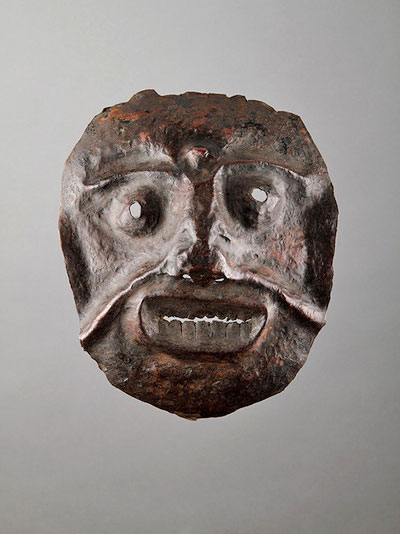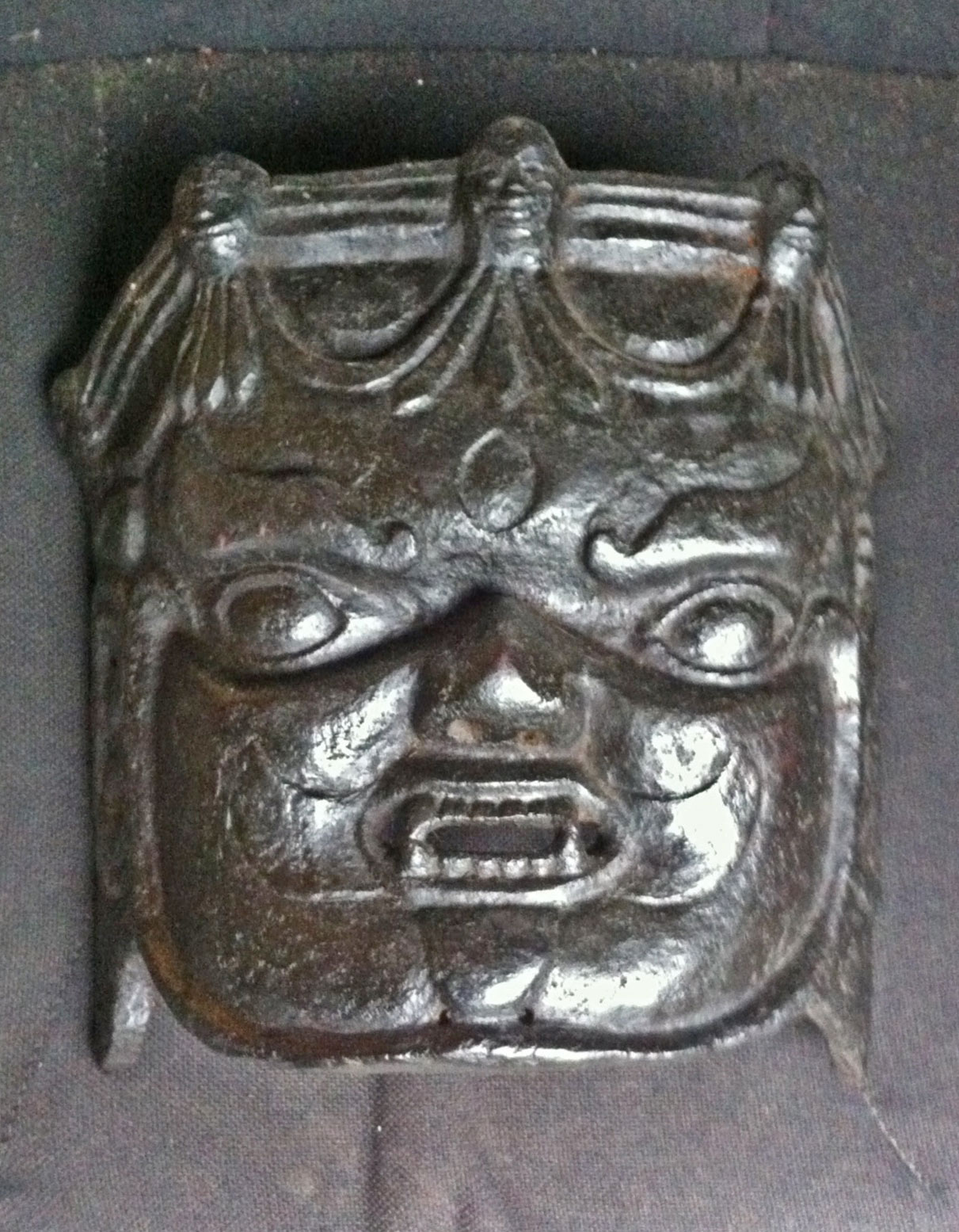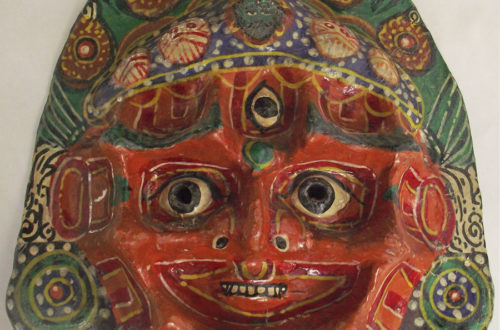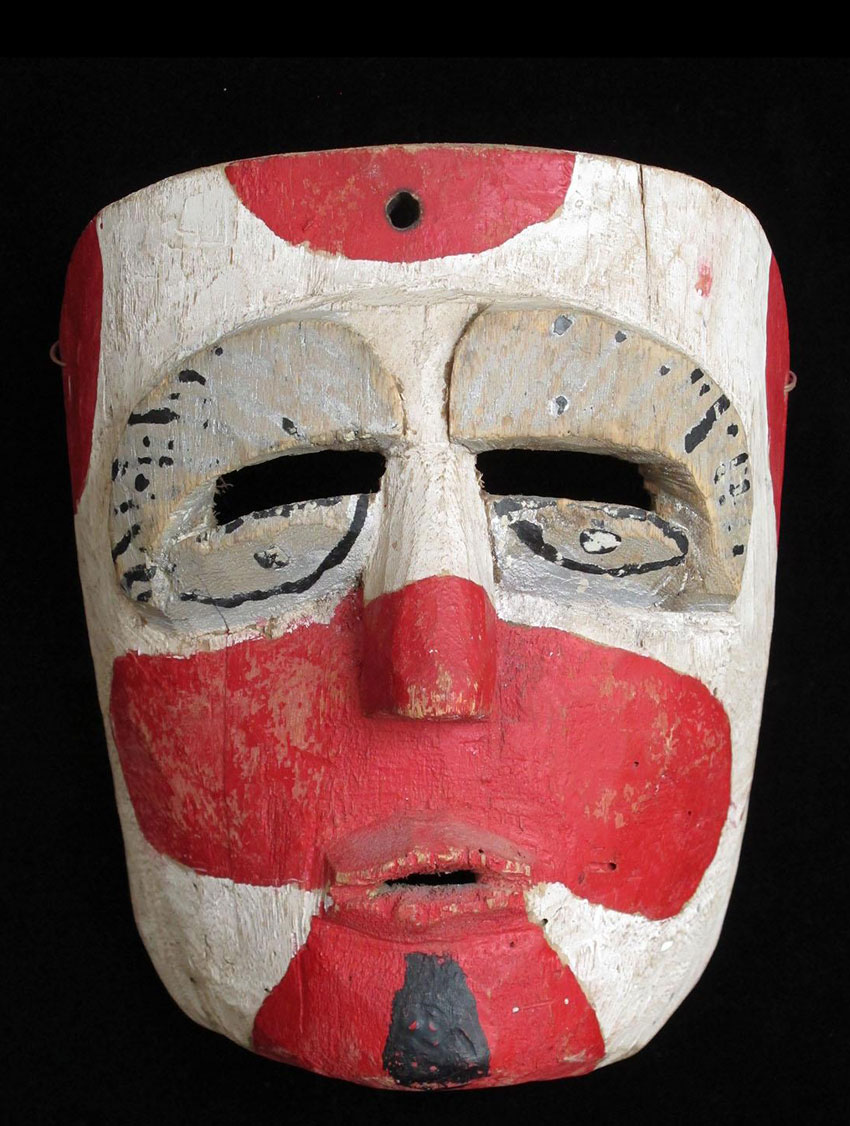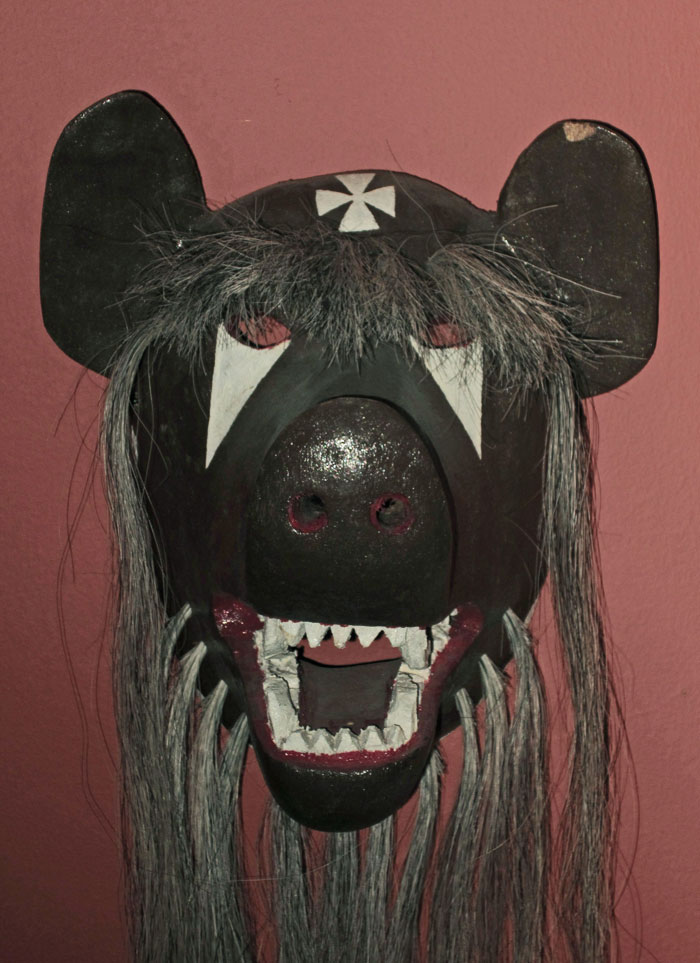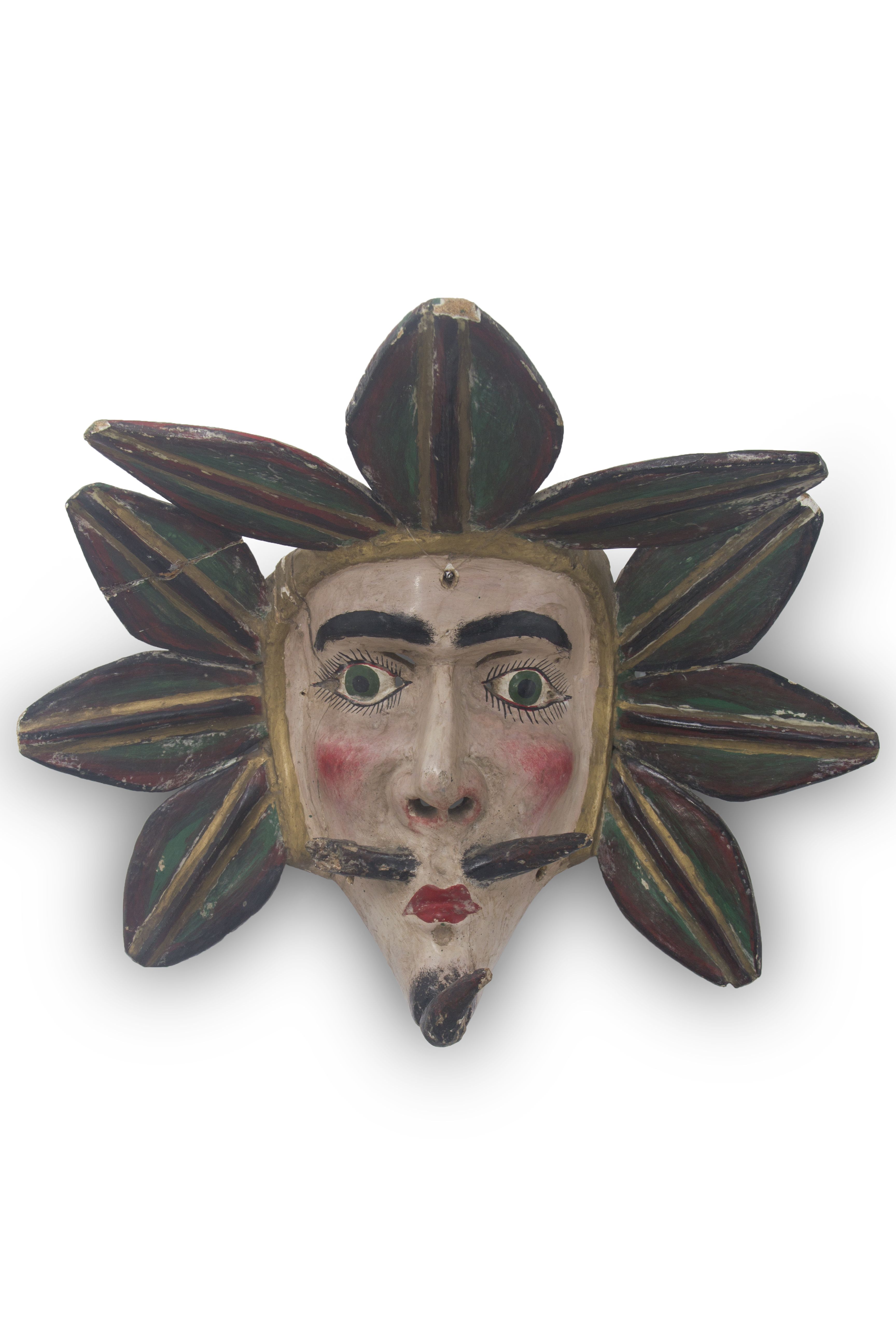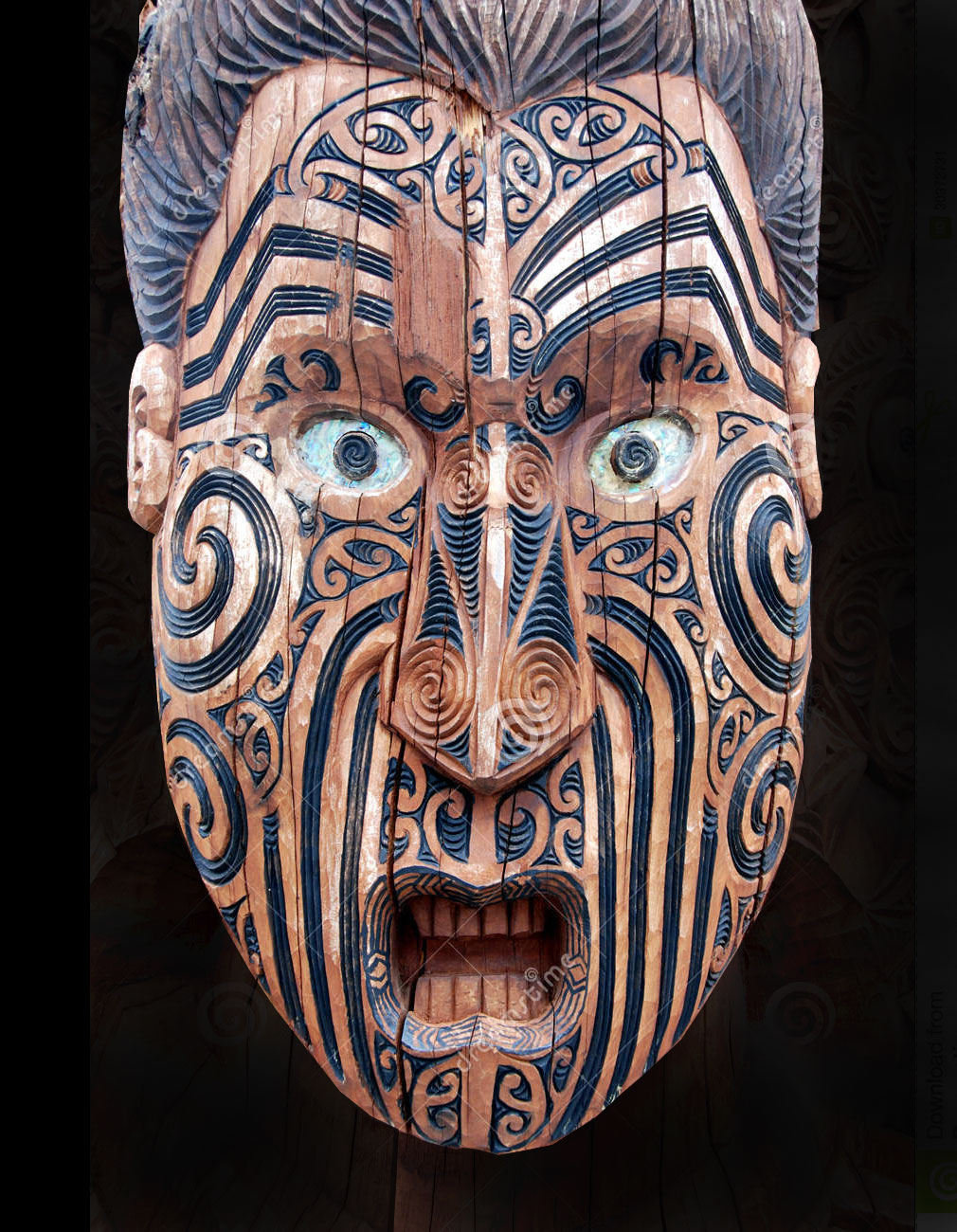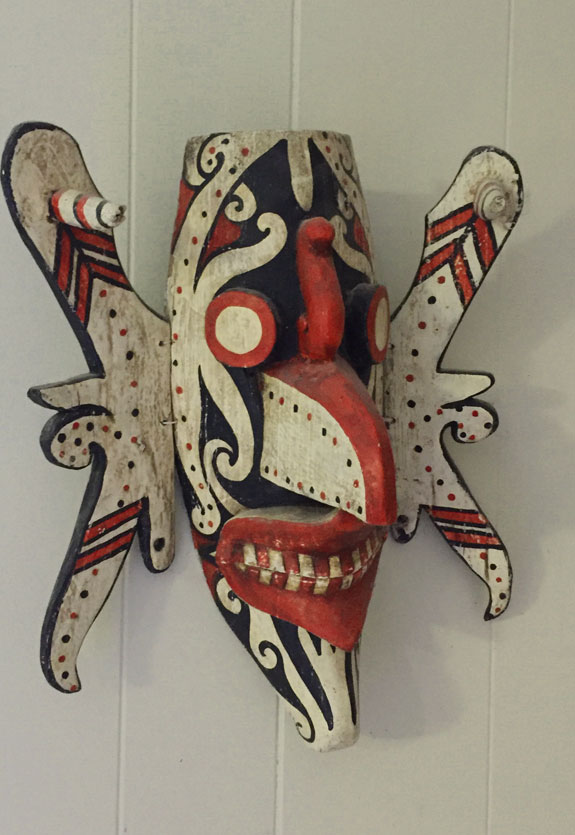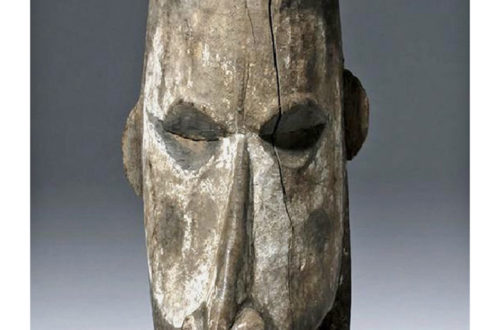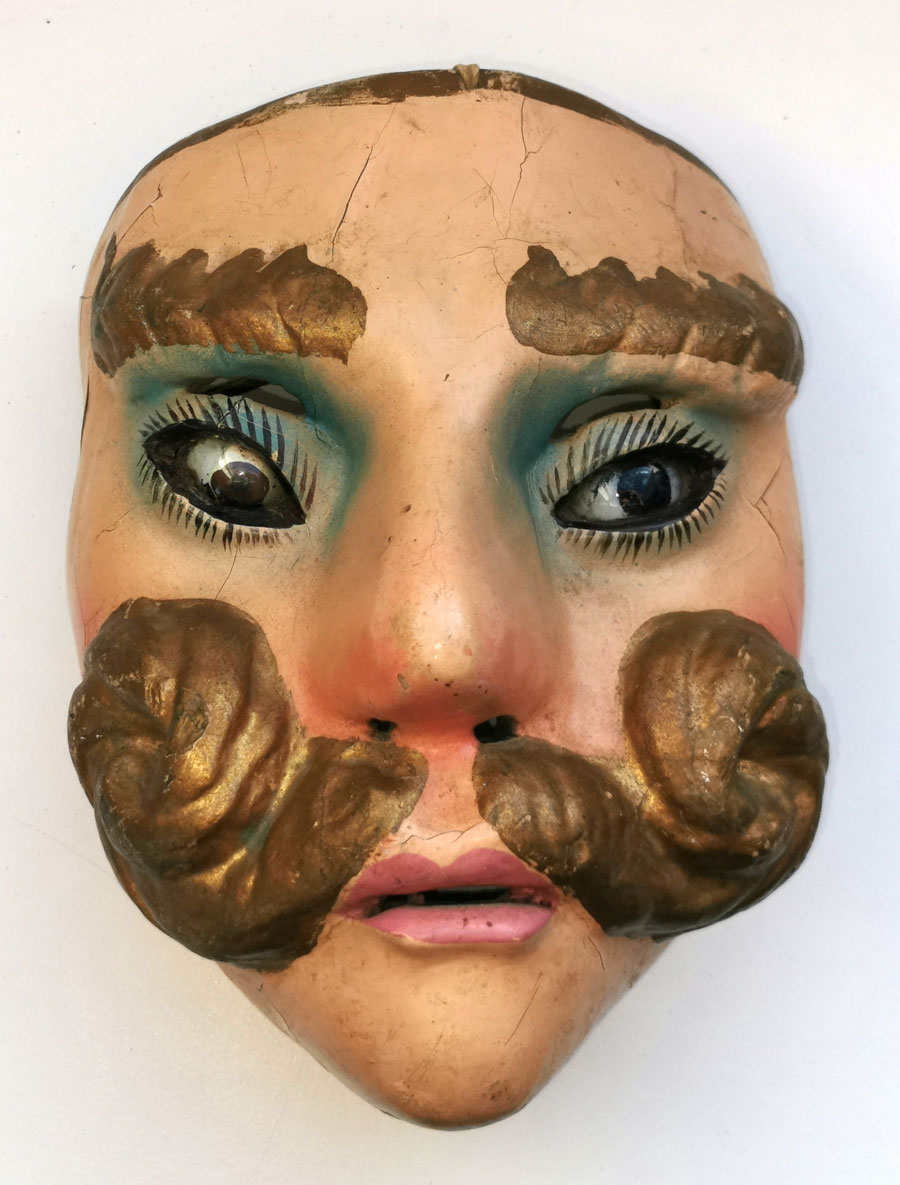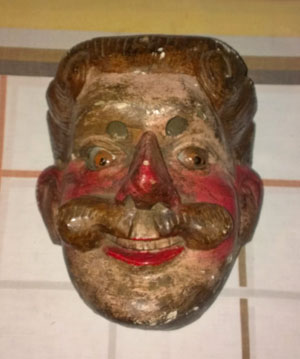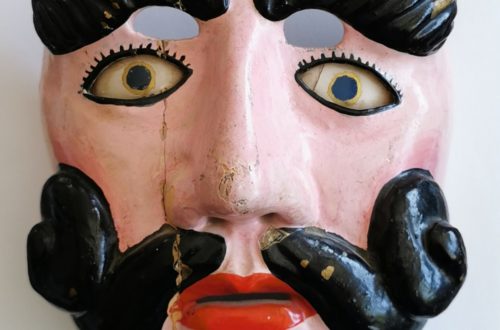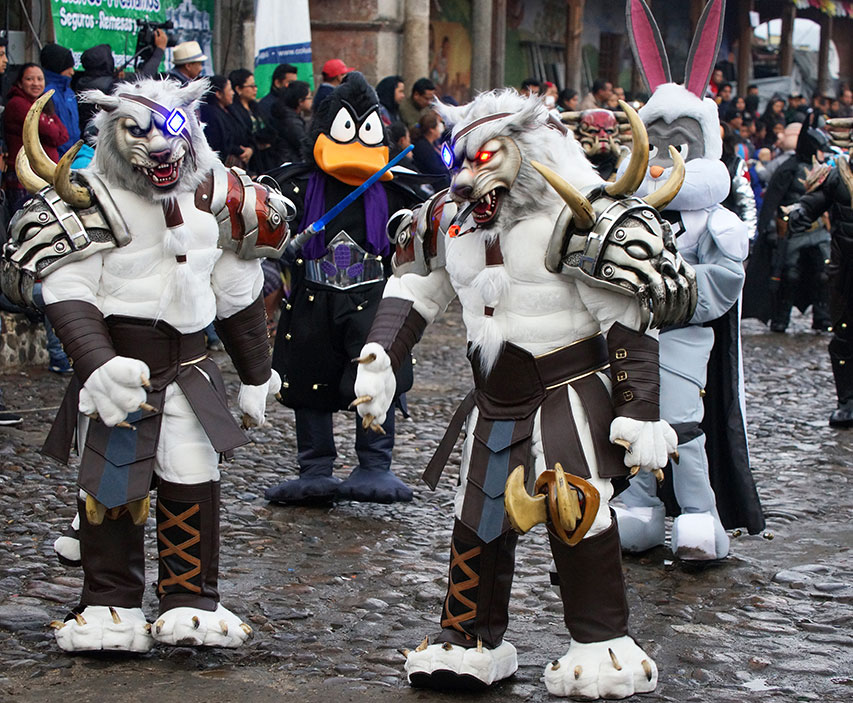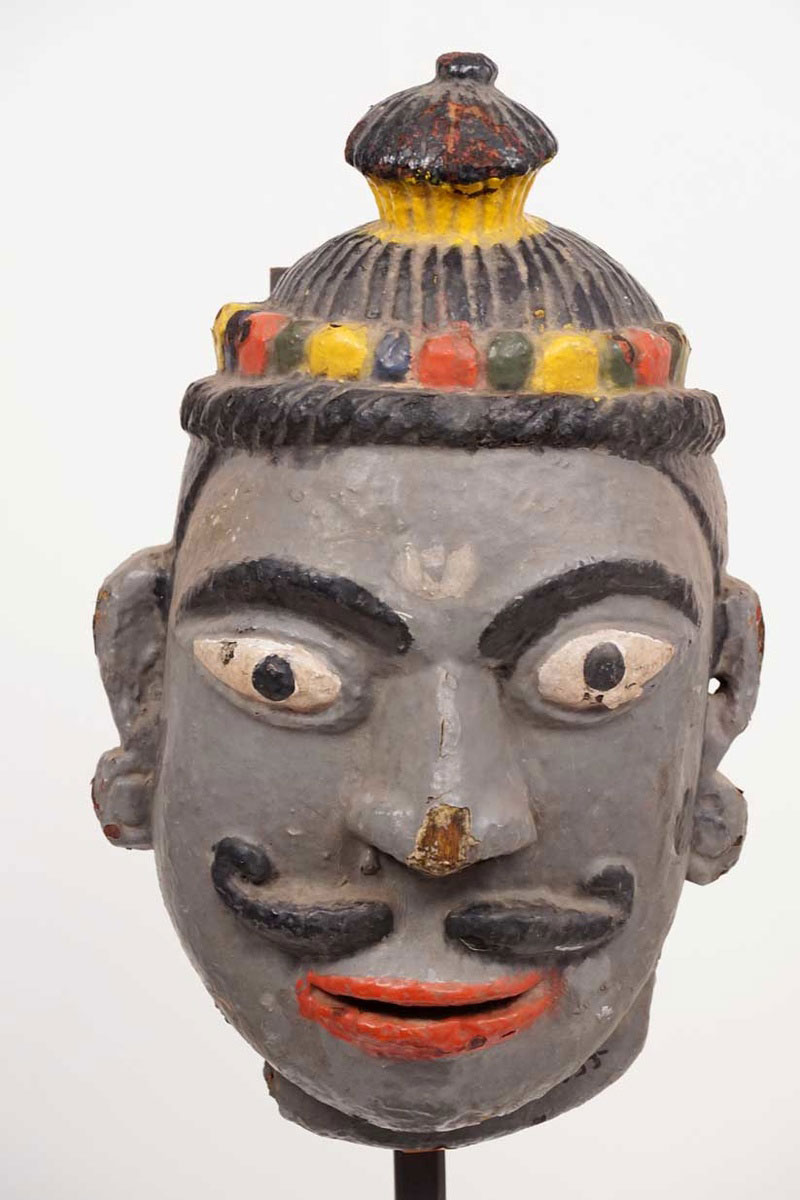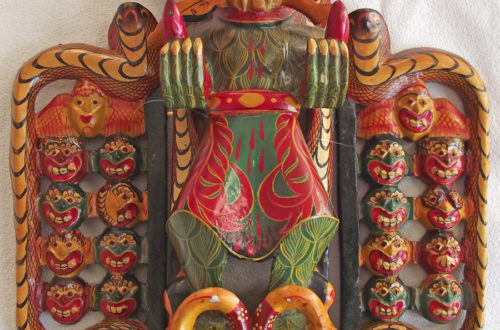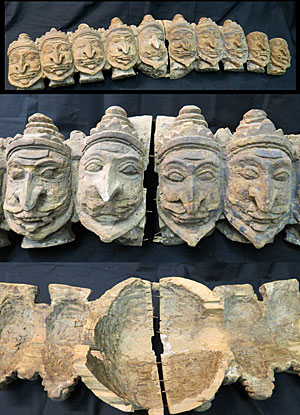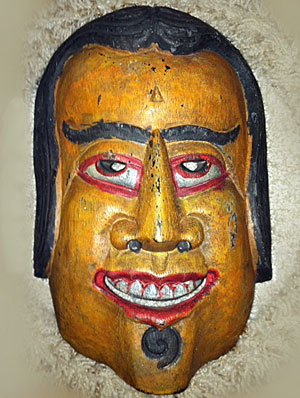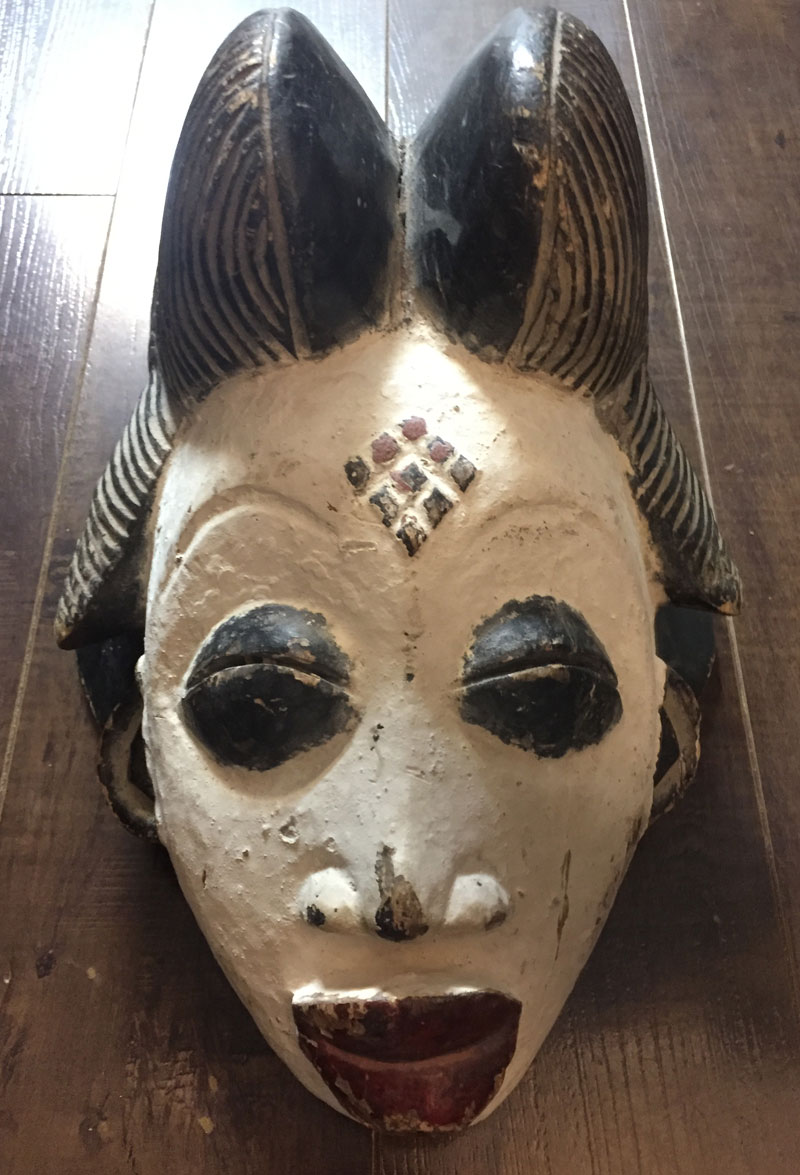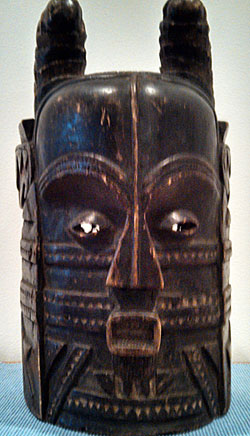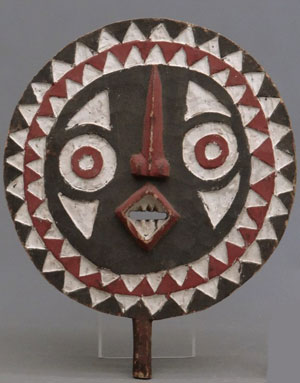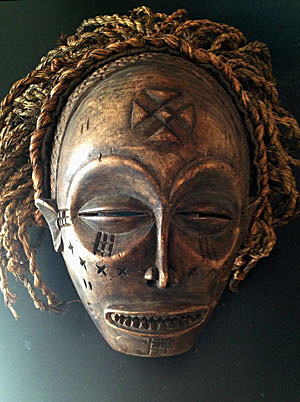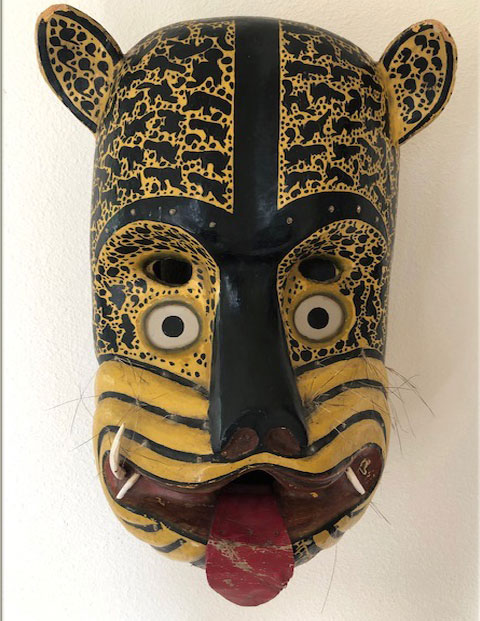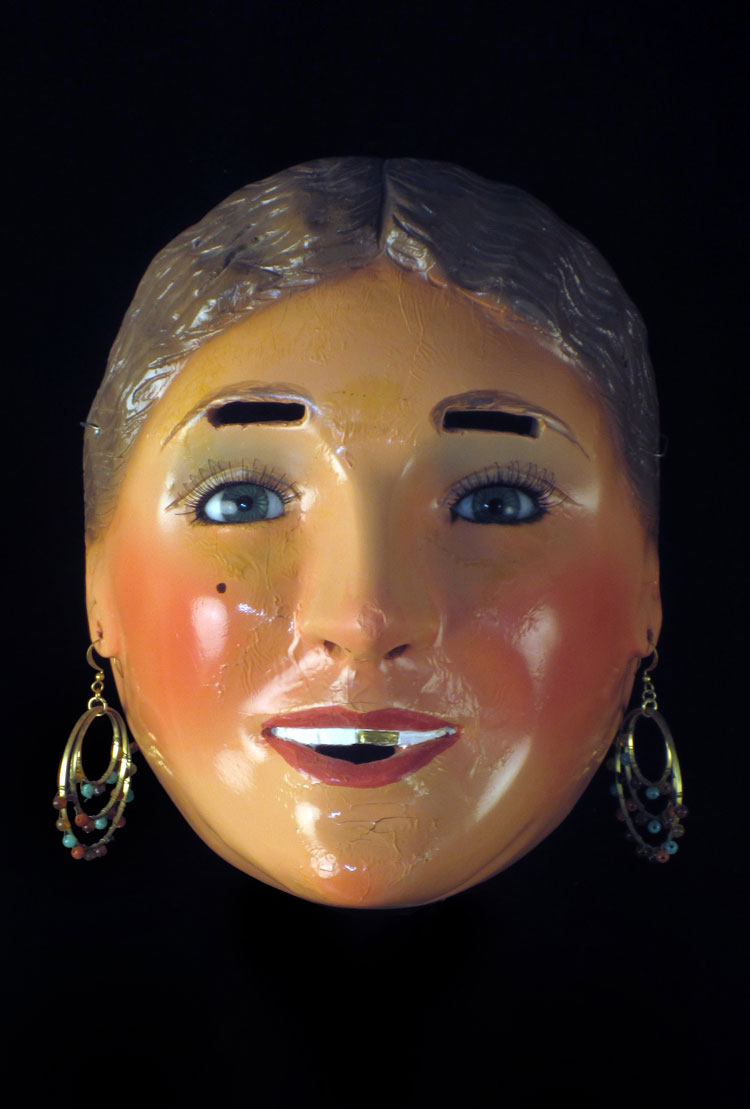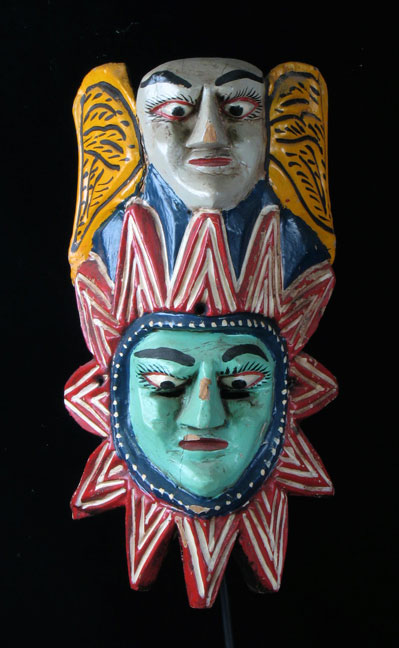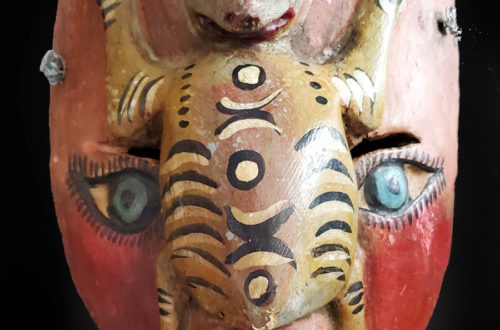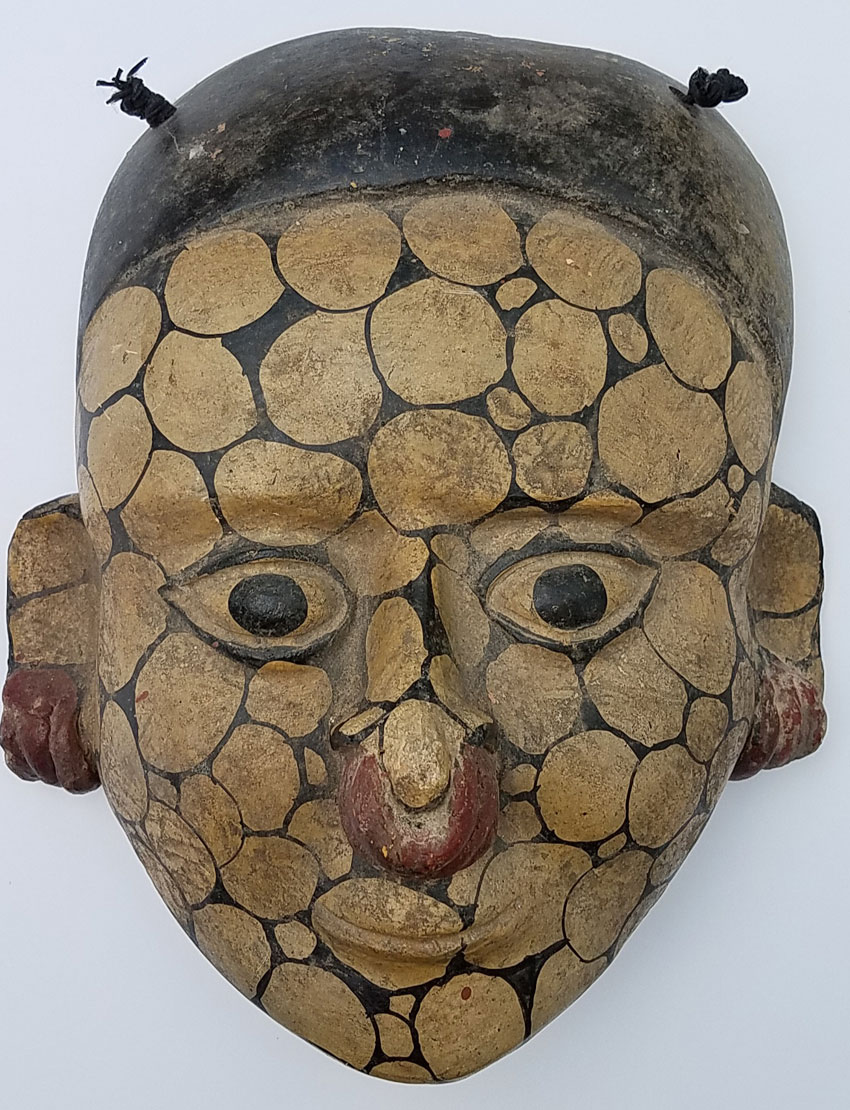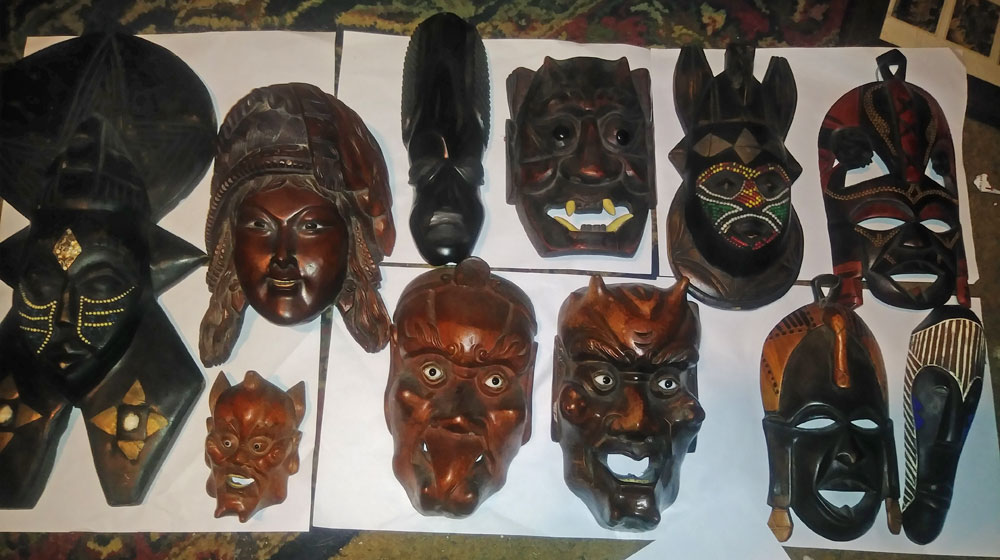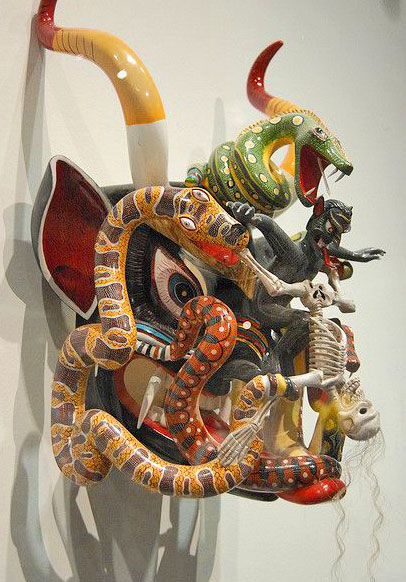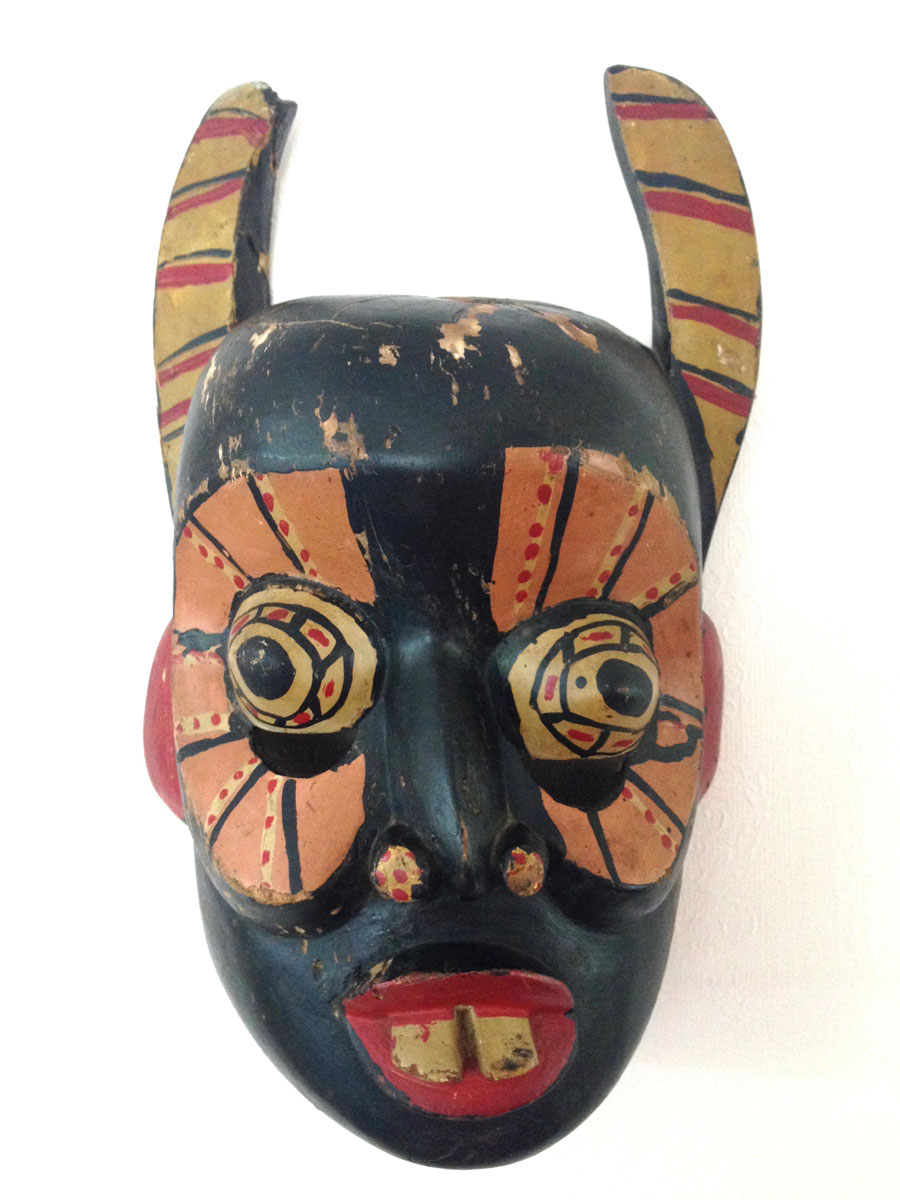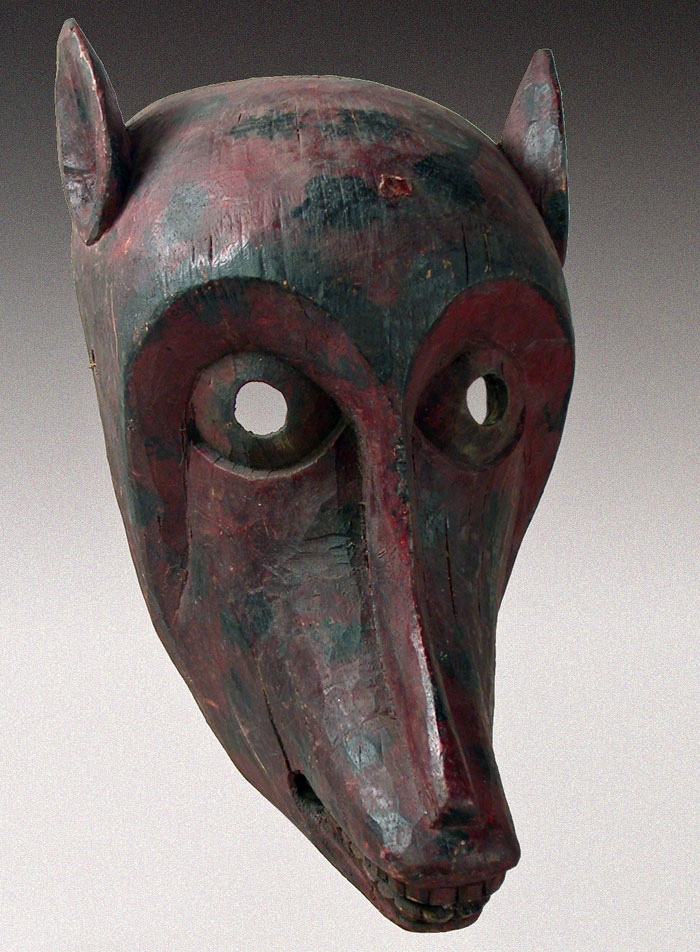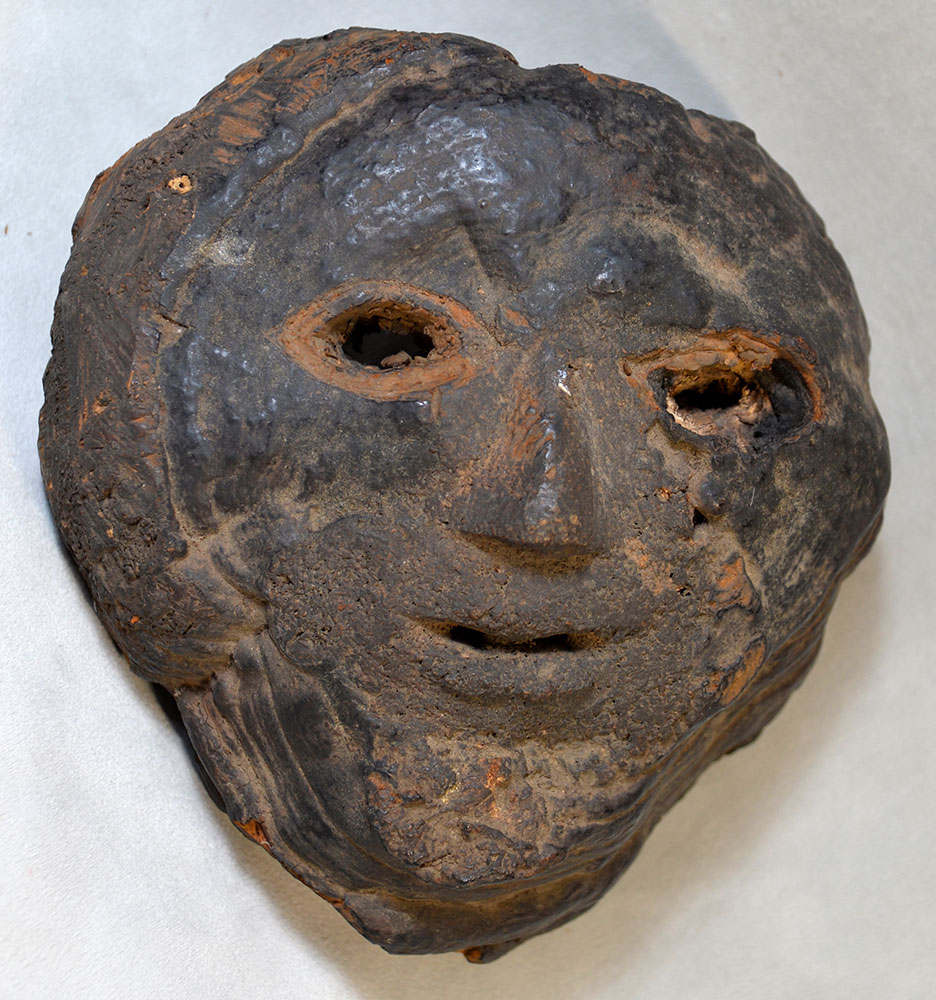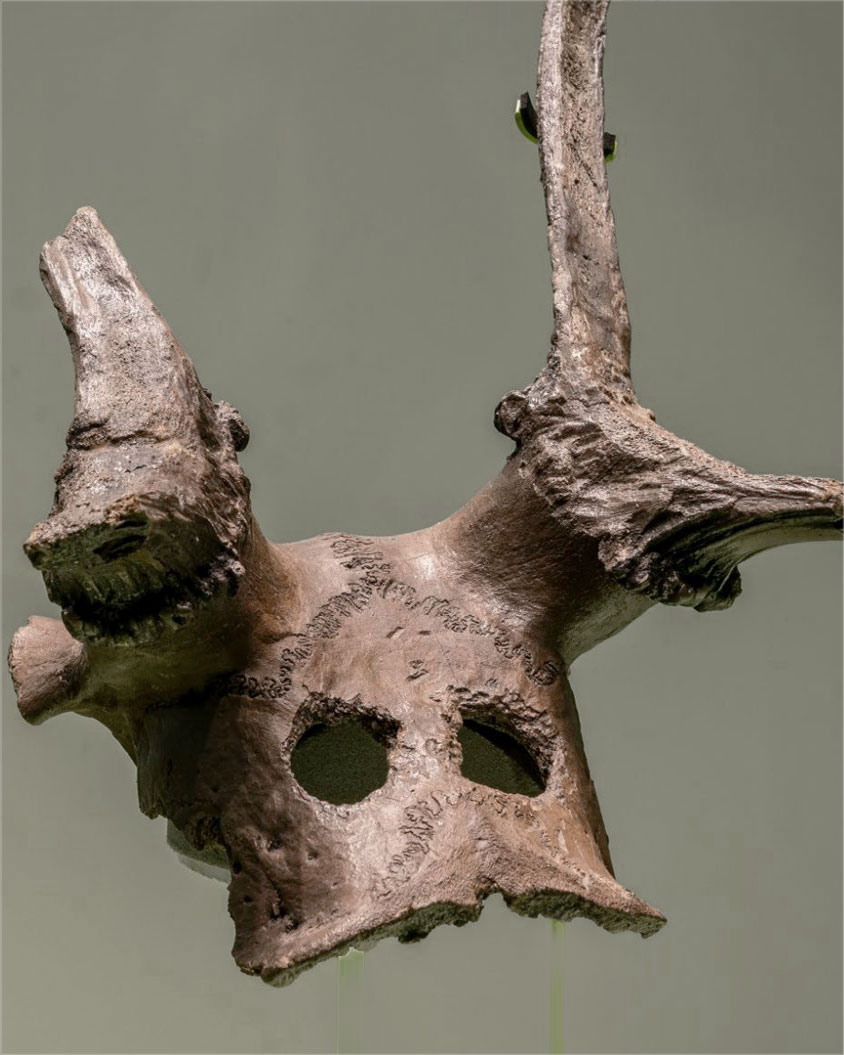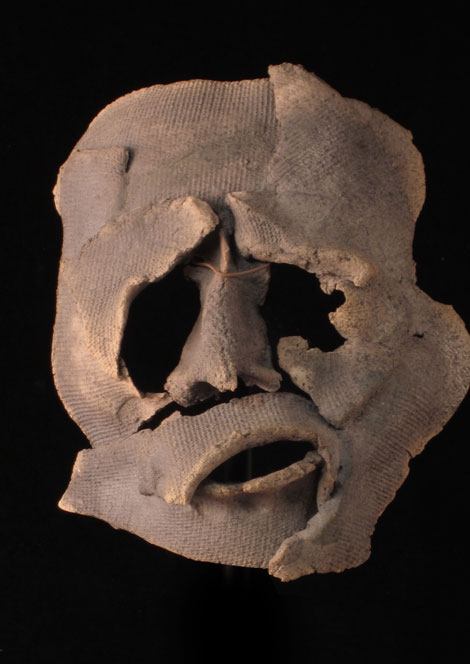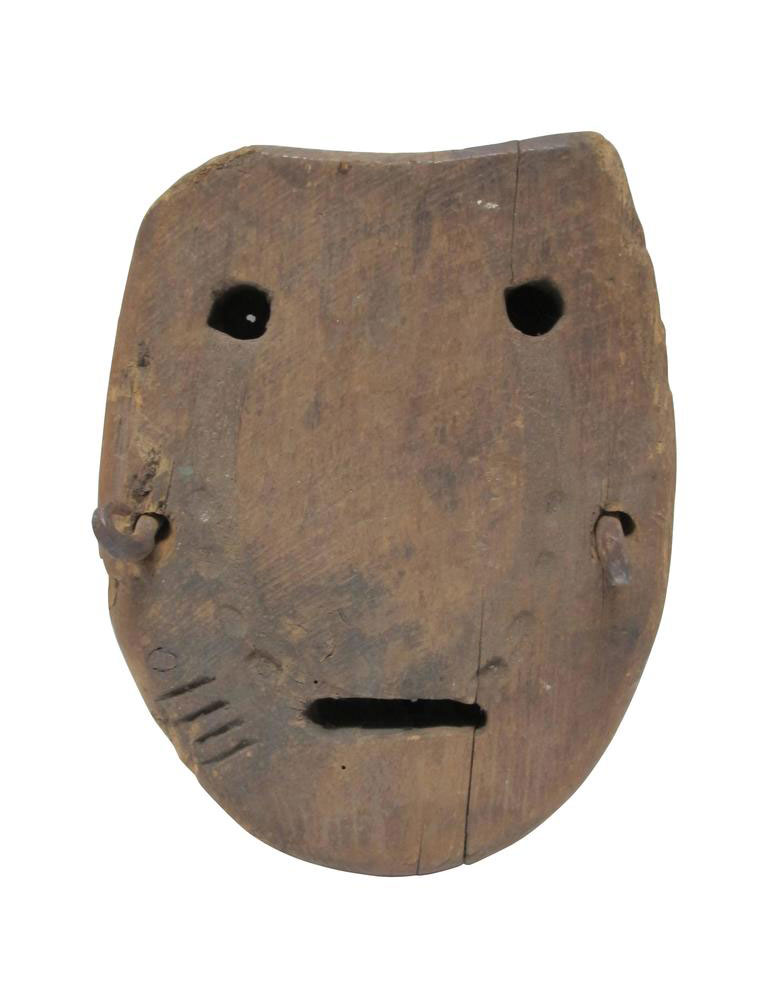Q: I came across an unusual mask described as 19th Century Tibetan Polychrome Wooden and Cloth Wrapped Mask. Not sure of its origin and background. My first criteria is masks from places I visited in order to “feel” the circumstances to which they are attached, and then the closest possible to its use (that means used masks or made by local artisans). I have 62 masks from 14 countries of the 48 that I have visited, even though some of them do not have mask traditions. Any info that you can provide? Joao, 1611 A: I suspect this mask is from somewhere in the huge country of India or perhaps…
-
-
Mexican masks are very collectible
Here we have a wonderful mask that can be purchased for a fair price. It was made and used by the Tocotin people for the dance of the Moors and Christians in the Papantla region of Veracruz, Mexico. It is of carved wood and from the mid-20th century. The measurements are 8 1/2” h. x 7” w. x 5” d. My purpose is to help people better understand ethnographic masks and to encourage collecting this amazing folk art from around the world. I am not in the business of promoting sales any more, so you’ll have to find this vendor with the aid of Google. 1610 A
-
Micronesian mask from Mortlock Islands
What you see here is an authentic mask from the Mortlock Islands, Micronesia, and it just fetched $2000 at auction. Micronesia is a large area of the world that is composed of thousands of small islands in the western Pacific Ocean. It has a closely shared cultural history with two other island regions: Polynesia to the east and Melanesia to the south. However, the Mortlock Islands are the only place were masquerade is performed in the region and all of their masks resemble this one. People like me, who collect masks from all over the world, feel it is important to have one of these in our collection because no…
-
Another Guatemalan mask
Q: Here is a Guatemalan masks recently found, and now just coming back from the restorer. It could be a “cristiano” or “conquistador.” The style of the masks is of the Alta Verapaz region, probably from early-mid XX. There is a nice dark patina on the back. Very hard wood, and heavy. It has a thick layer of gesso and several layers of paint. Jean, 1608 A: We have a lot of masks from the small country of Guatemala in the archives of this site. Even though you can immediately recognize the country of origin, this mask is different from all the others. One can tell it is old and…
-
Old and used mask from India
On the 14th of this month I posted blog #1603 which was a mystery mask from India. Aaron Fellmeth, a famous authority on masks, was kind enough to comment. He named several parts of India where masks are commonly used, but didn’t recognize this particular mask and thought it probably was decorative art for tourists. None the less, what he said will help direct collectors to areas rich in authentic masks. However, with 1.3 billion people, India has 22 separate ethnic groups speaking languages other than Hindi, and all of these people are displaying varied cultures, religions, and related artifacts. I think all of these separate groups probably practice masquerade.…
-
Puno mask from Africa
Q: I bought this mask from an estate sale of a well traveled man who served in both Northern Africa and Burma in the war. His daughter said she can remember the mask as a child and it used to scare her. I have no idea if there is truth to the story but she was in her early 70s. I paid $60 for it. I have always loved tribal masks but don’t know enough about them to comfortably collect them. I should note that the reddish colour and white are not paints but powder. Jarrett, 1606 A: Nice mask in my opinion. You got it for a good price.…
-
Tigre mask from Olinala, Mexico
Q: I purchased this in Mexico in the 70’s when I lived there. I don’t remember where or how much I paid. The black areas on the mask are actually small carved animals. It is beautiful and in very good condition. There is a small crack on the top of the mask. Linda, 1605 A: Look in the archives for mask #1574 that was posted May 31, 2019. Today’s Tigre comes from the same village in Guerrero, but it’s a lot different. Mexican mask carvers often have their own personal styles of carving and painting. I’ll give it a B+ because I’m not sure of its authenticity.
-
Mystery mask
Q: I recently purchased this mask for my collection and have had zero luck identifying it’s origin. It measures 9″ across x 12″ tall x 5″ deep. It is made of some variety of ceramic clay–possibly terracotta in part. The back side includes speckling but I am not knowledgeable enough to discern authentic from reproduction but am leaning toward older reproduction? Thanks much! JC, 1604 A: This could be an ancient burial mask, or maybe a piece of decorative art. It is not a real mask made for usage by a live human. It is too large, impossible to wear on the face, and easy to damage. Having said that,…
-
Old mask purchased in Kerala, India
Q: I was wondering if anyone could help with this mask from India. Any insights would be appreciated. It was bought in Kochi (Kerala) in 2008 from one of the main antiques stores in the old town, but sadly not much more information survived when it was passed on to me. The mask still carries faded but quite vivid yellow on most parts of the face and purple on the eyelids and headband. There is an indentation from the headgear down all around the face, as well as three dotted indentations above the lips. Behind the ears are two holes, presumably for hanging the mask. The back has two written…
-
Deer Skull Masks Made 11,000 Years Ago
Over 11,000 years ago, people in Star Carr were carving eyeholes into the crania of dead deer, presumably using the stone tools found at the northern Yorkshire site. As of Thursday, three of the 33 evocative headdresses made by the Mesolithic-era hunter-gatherers out of deer skulls, and other miraculously preserved artifacts, are on display at Cambridge University’s Museum of Archaeology and Anthropology. Ordinarily, all that latter-day archaeologists find from the distant past are stone and pottery artifacts that don’t suffer decay. There are exceptions, such as peat bogs in which the oxygen-breathing bacteria of rot cannot live. In Yorkshire, northern England, the waterlogged ground at Star Carr almost miraculously preserved…

